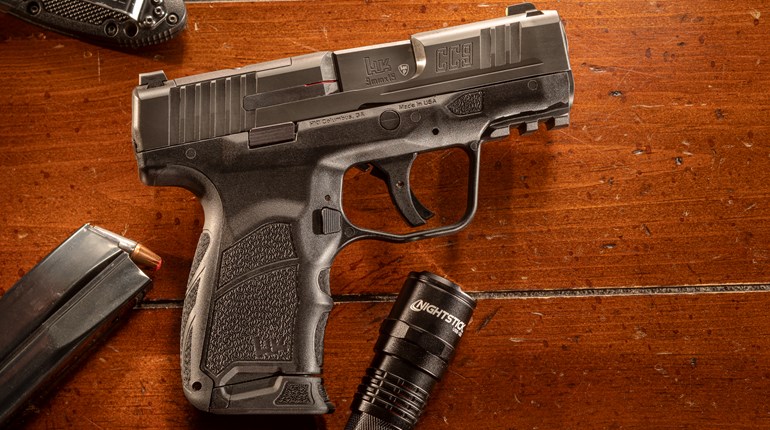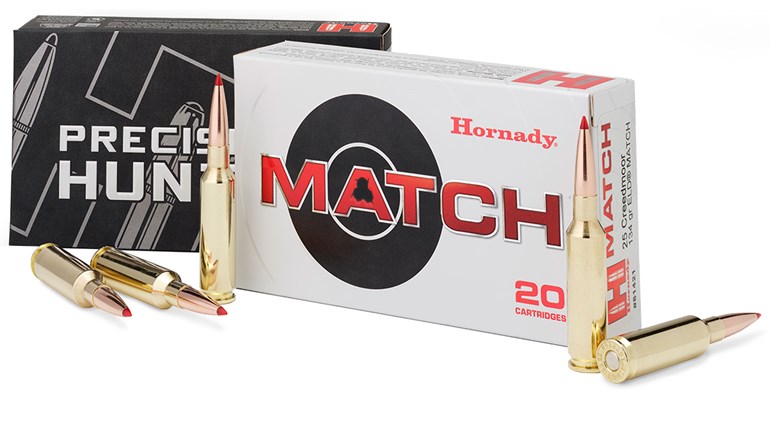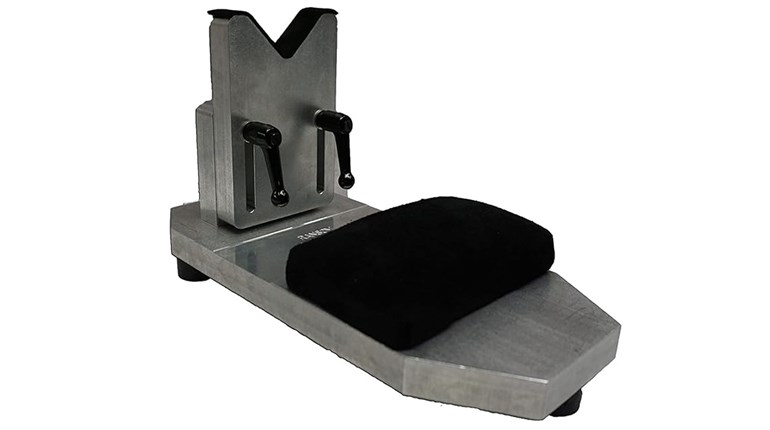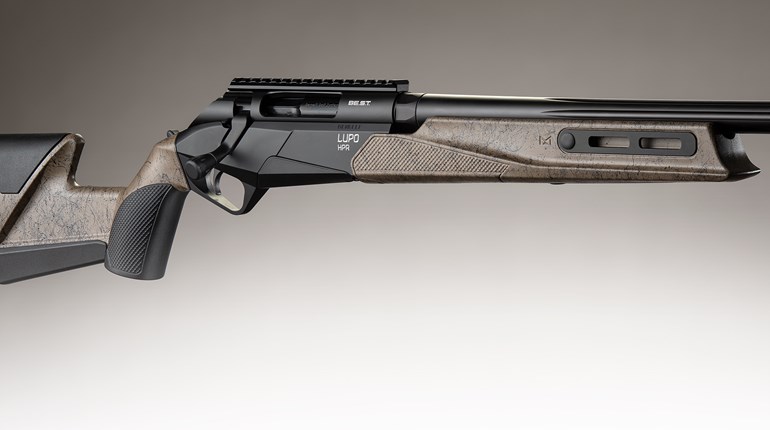
Beretta’s APX Carry is the latest edition to the APX line of polymer-frame, striker-fired pistols. Similar to the APX Carry in dimensions and sharing the same modular chassis frame is the Beretta Nano, but the two pistols diverge in obvious and subtle respects. Unlike the Nano, the APX Carry has a slide-stop lever and also a different grip frame, slide, striker guide and spring, sights and extractor. Both models are made in Beretta’s Gallatin, TN factory.
Serialized and regulated, the stainless steel chassis frame contains the firing mechanism. It is removable from the grip frame, making cleaning and repair easier than pistols with molded-in parts. You can also switch to different-colored APX Carry or Nano grip frames for $39 MSRP and customize your grip frame—without risking permanent alteration to the regulated component.
The slide assembly has a nitride finish. Sights are steel construction with a white dot out front and glare-reducing serrations on the rear. The rear sight has a cocking ledge for single-handed slide manipulations in an emergency and is drift-adjustable by hand after loosening a setscrew. Both sights are easily changed using an Allen wrench and also fit the Nano and Pico.
This pistol is durably made with more steel and thicker plastic than several competitive pistols. The grip frame is effectively textured with raised pyramids on the front and backstraps, and sandpaper-like crinkle on the sides to keep the pistol from twisting in your hand during recoil.
Two polished, stainless steel magazines are supplied. The six rounder has a flat floorplate and an extra pinky-rest floorplate is included, while the eight-round magazine extends the height about .5 inch and has a polymer collar surrounding its bottom. The pinky-rest floorplate and the collar have effective, raised-pyramid texturing on their leading edges and provide a full-hand hold for small- and medium-size hands, respectively.
The magazines have witness holes, but lack numeric markings indicating the remaining round count. Fully loaded, both readily insert and lock into place even if the action is closed, which facilitates tactical reloads. The six rounder can be loaded with one additional round, but will only fully insert if the slide is rearward. There’s a temptation to trim the magazine spring to allow insertion with the action closed, but Beretta recommends against this because the shortened spring may be insufficiently strong for reliable feeding.

The striker is partially tensioned when the slide is racked. Pressing the trigger disengages the pivoting trigger tab, deactivates a striker block inside the slide that keeps the firing pin away from the primer and fully cocks then releases the striker. Striker blocks are a standard feature on semi-automatic pistols, but the APX Carry’s design goes further than most in two respects.
First, as the trigger is pressed, part of the striker block protrudes from the top of the slide as it is deactivated. This allows the operator to verify that it is not stuck in the deactivated position, which would be hazardous. Second, because the striker block protrudes slightly when the striker is decocked, it serves as a cocking indicator. The striker must be decocked before removing the slide to fieldstrip the pistol by pressing the striker-deactivation button on the right side of the grip frame using a small punch or ballpoint pen tip, or pressing the trigger.
The APX Carry was tested for accuracy using two defensive and one practice load shot from rested sandbags at 15 yards. Though this pistol will never see practical use from a benchrest, these tests confirm if the pistol shoots to point-of-aim and can help determine its ammo preferences with respect to accuracy. The smallest average five-shot group of 1.69 inches was obtained from Black Hills’ 124-grain +P JHP, with the smallest single group of 1.2 inches coming from SIG Sauer’s P365 115-grain JHP. All loads printed 2-3 inches below point-of-aim when using a center hold sight picture, which can be corrected by changing the front sight.
Additional function testing was conducted using two additional loads. Functioning was great over 400 rounds except for a single failure to chamber one round of LTech ammunition. Uploading the six-round magazine to seven did not create any stoppages, even with Blaser 147-grain loads with a flat-nose characteristic of 147-grain bullets.
The trigger pull measured 6.3 pounds using a Lyman electronic scale. The stroke is long, but perceptibly smooth, moving approximately 5/8 inch before breaking at an angle beyond 90 degrees to the bore line. There is no overtravel, and the trigger must be almost fully released to reset the mechanism. The slide-stop lever and magazine release are accessible while not interfering with grip.
This pistol indexes on target naturally using the six-round magazine, but the extended magazine makes it point low because the plastic collar is angled forward at its base and cams the muzzle downward. The six-round magazine with the pinky-rest floorplate also affords a good two-hand hold for small- to medium-size hands. The best technique is not to cram all your fingers onto the frontstrap and rest, but instead place the pinky beneath the rest. This method is comfortable and spreads your firing hand allowing your support hand to fully wrap around it.
Small pistols can be challenging to shoot accurately and often require an adjustment in your technique. I found that a firm grip with the support hand positioned high, angled aggressively forward and applying upward pressure worked best because it mitigates the tendency to dip the muzzle downward, which is a problem inherent with hinged triggers that break well beyond 90 degrees.
The trigger guard, however, is sized to accommodate winter-weight gloves and this grip would be easier to establish if the guard was smaller in front and more undercut at the rear. This may be remedied by using a Nano grip frame with its smaller, rounded trigger guard. Though the APX transmits less recoil than expected and is not fatiguing to shoot, wear a light glove for range sessions if you use the method I recommended, because your trigger finger could rub against the trigger guard.
Well made, compact, reliable and durable, the APX Carry is a good choice for those who prefer a pistol with a long, yet moderate trigger-pull weight. It also seems particularly well-suited as a backup pistol where deep concealment is needed in a belly band or tactical holster shirt.







































